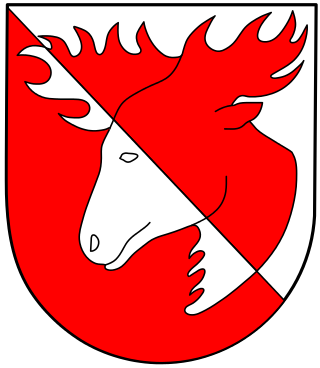
The 12th Panzer Division was an armoured division in the German Army, established in 1940.

The 11th Infantry Division was an infantry division of the Wehrmacht that was initially founded as a cover formation during the Reichswehr era. It was active from 1934 to 1945.

The 197th Infantry Division was a Wehrmacht division in World War II. It was activated on 1 December 1939.
The 85th Infantry Division was a Wehrmacht division used in the Second World War. It participated in the German defence in the Battle of Normandy, and took part in the German counter-offensive in the Ardennes.
The 290th Infantry Division was a German infantry division in World War II. It was formed in the Munster Training Area in Wehrkreis X on 6 February 1940 and surrendered to Soviet forces at the end of the war as part of Army Group Courland.
The XXIX Army Corps was an infantry corps of the German Army during World War II, active from 1940 to 1945.
The 59th Infantry Division(German: 59. Infanteriedivision) was a military division of the Wehrmacht during World War II.
The LIII Army Corps was a corps of the German Army during World War II. It was first deployed in 1941 and was active as part of various armies under Army Group Centre until 1944, when it was destroyed during the Soviet Red Army operations Bagration and Kutuzov in June and July 1944. The corps suffered enormous casualties as a result of the Soviet attacks. All of its divisions were destroyed and all but a few of the soldiers were killed or captured by the Soviet Union. A new formation named LIII Army Corps was subsequently deployed in December 1944, when it was assigned to Seventh Army and fought on the western front until surrendering to United States Army forces in April 1945.
The 225th Infantry Division was an infantry division of the German Heer during World War II.
The 196th Infantry Division was an infantry division of the German Heer during World War II.
The 199th Infantry Division was an infantry division of the German Heer during World War II.
The 270th Infantry Division was an infantry division of the German Heer during World War II.
The 321st Infantry Division was an infantry division of the German Heer during World War II. Between November 1943 and June 1944, it was known as Division Group 321.
The 544th Volksgrenadier Division was a Volksgrenadier-type infantry division of the German Wehrmacht during World War II. It was active from July 1944 to May 1945. In the first two months of service, the division was designated 544th Grenadier Division.
The 328th Infantry Division was the name of two distinct infantry divisions of the German army during World War II. The first, simply dubbed 328th Infantry Division, existed between 1941 and 1943, while the second, designated 328th Infantry Division "Zealand", existed for just under two months in 1945.
The 330th Infantry Division was an infantry division of the German army during World War II. It was active between 1941 and 1943.
The 355th Infantry Division was an infantry division of the German army during World War II. It existed between May and November 1943.
The 557th Infantry Division was an infantry division of the Heer, the ground forces of Nazi Germany's Wehrmacht. It was active for several months in the year 1940.

The Infantry Division Courland was an infantry division of the German army during World War II.




